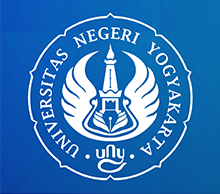Keywords
development, learning media, mind map, video processing subject, vocational school
Document Type
Article
Abstract
Learning achievement determined by acceptance of students' understanding of learning material. Therefore, a media that makes it easy for students to receive learning materials is needed. This research aims to create an interactive learning media with mind map concept in Video Processing subject. Method used in this research was research and development with 5 steps, (1) problem and potency analysis, (2) data collection, (3) product design, (4) design validation, and (5) design improvement. Media's advisability, which had developed, in percentage are 89% from media expert, 92% from material expert, 85% by users (limited) and 87% from users (expanded). It can be concluded that the design of learning media is "very appropriate". The benefits of the learning media are: (1) interactive and fun, (2) equipped with videos tutorial, (3) equipped with exercises which able to scored and able to see the correct answers.
First Page
97
Last Page
105
Page Range
97-105
Issue
2
Volume
4
Digital Object Identifier (DOI)
10.21831/elinvo.v4i2.18434
Source
https://journal.uny.ac.id/index.php/elinvo/article/view/18434
Recommended Citation
D. Y. Cobena et al., "Pengembangan Media Berbasis Mind map untuk Meningkatkan Pemahaman Siswa pada Pelajaran Teknik Pengolahan Video,", vol. 4, no. 2, pp. 97 - 105, Dec 2019.
The definitive version is available at https://doi.org/10.21831/elinvo.v4i2.18434
References
M. N. Dwiastuti, A. Efendi, and Basori, “Pengembangan Media Pembelajaran Interaktif Pada Mata Kuliah Teknik Animasi 3 Dimensi Di PTIK Uns Dengan Menggunakan Java Netbeans,” in Prosiding Seminar Nasional UNS Vocational Day, 2018, pp. 261–266.
Mulyasa, Pengembangan dan Implementasi Kurikulum 2013. Bandung: PT Remaja Rosdakarya, 2014.
T. K. Tee, M. N. A. Azman, S. Mohamed, M. Muhammad, M. M. Mohamad, J. M. Yunos, M. H. Yee, and W. Othman, “Buzan Mind Mapping : An Efficient Technique for Note-Taking,” Int. J. Soc. Hum. Sci. Eng. Vol8, vol. 8, no. 1, pp. 28–31, 2014.
Sugiyono, Metode Penelitian Pendidikan (Pendekatan Kuantitatif, Kualitatif, dan R&D). Bandung: Alfabeta, 2014.
H. Musfiqon, Pengembangan Media Dan Sumber Belajar. Jakarta: Prestasi Pustaka, 2012.
D. Darmawan, Teknologi Pembelajaran, 2nd ed. Bandung: PT. Remaja Rosdakarya, 2011.
Riduwan, Skala Pengukuran Variabel-variabel Penelitian.Bandung: Alfabeta, 2009.
L. Astuti, “Pengembangan Media Pembelajaran Interaktif dengan Menggunakan Adobe Flash CS3 untuk Memfasilitasi Kemampuan Pemecahan Masalah pada Pembelajaran Matematika Kelas VIII,” Universitas Islam Negeri Sunan Kalijaga, 2012.
E. Merchie and H. Van Keer, “Mind mapping as a meta-learning strategy : Stimulating pre-adolescents ’ text-learning strategies and performance ?,” Contemp. Educ. Psychol., vol. 46, pp. 128–147, 2016.
T. Wu and A. Chen, “Computers & Education Combining e-books with mind mapping in a reciprocal teaching strategy for a classical Chinese course,” Comput. Educ., vol. 116, pp. 64–80, 2018.
Y. Liu, Y. Tong, and Y. Yang, “The Application of Mind Mapping into College Computer The Application of Mind Mapping into College Computer Programming Teaching Programming Teaching,” Procedia Comput. Sci.,vol. 129, pp. 66–70, 2018.
P. Utami, G. P. Cikarge, M. E. Ismail, and S. Hashim, “Teaching Aids in Digital Electronics Practice through Integrating 21st Century Learning Skills using a conceptual approach,” in Journal of Physics: Conf. Series, 2018, pp. 1–9.
Q. Fu, C. Lin, G. Hwang, and L. Zhang, “Computers & Education Impacts of a mind mapping-based contextual gaming approach on EFL students ’ writing performance , learning perceptions and generative uses in an English course,” Comput. Educ., vol. 137, no. April, pp. 59–77, 2019



